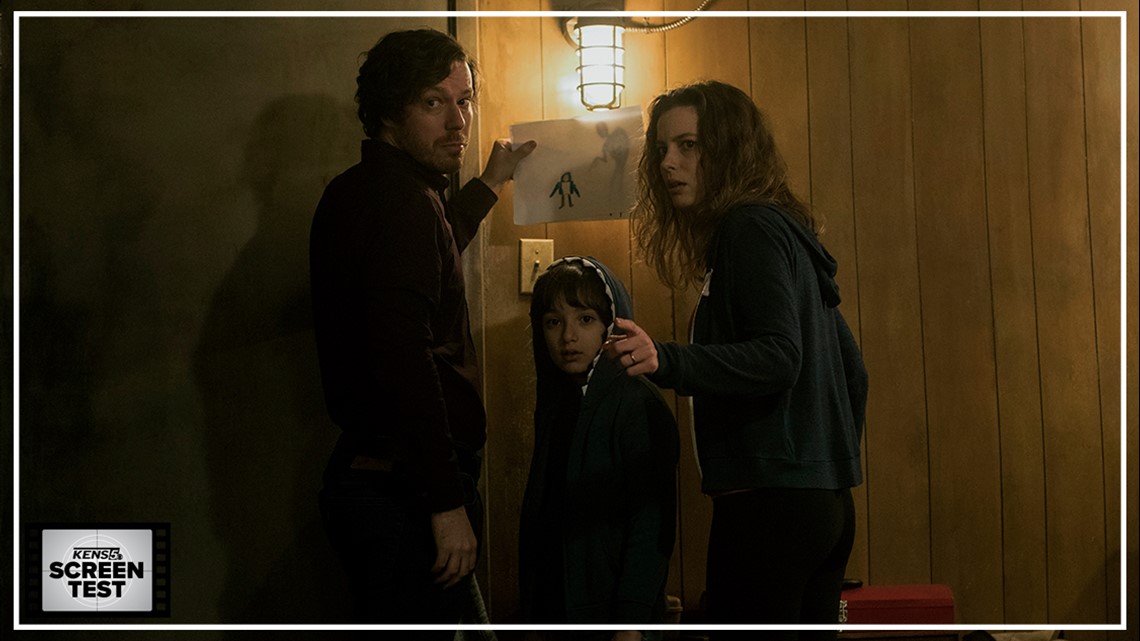[[Note: When "Come Play" releases in the U.S., it will largely be at indoor movie theaters during the ongoing coronavirus pandemic. While the purpose of this review goes deeper than binary recommendation to discuss the film's merits as an artistic work in context of its time, we encourage our readers to continue exercising the latest safety guidelines from health authorities and consider them if and when you may decide to visit the cinema to watch this movie.]]
Nothing strikes fear in the heart quite like seeing “Low Battery” pop up on your tablet and watching the green on your device’s life bar dip into a terrifying shade of blood-red as you’re clicking into the latest polling updates or binging your ninth straight episode of “Hot Ones.” Our inextricable psychological connection with screens – and, by dubious proxy, with the world around us – has proven to be valuable fodder for filmmakers of all kinds, even as the evergreen presence of a cell phone has also been exploited for narrative shortcutting. Need to track down a kidnapped victim, stalk an ex or text a quick threat? There’s an app for that.
In “Come Play,” a new horror-thriller that could’ve used bit more imagination and a lot more self-awareness, the screens aren’t shortcuts through a story but to another realm altogether—one where a malevolent entity lurks with the unquenchable drive of a Silicon Valley corporation and stares back at a device’s user with raspy breaths that suggest it’s literally unquenched. Writer-director Jacob Chase isn’t necessarily intending for this slippery, towering demon to ring of Big Tech metaphor in his feature debut, however; his emphasis, however much he undercuts it for cheap spooks, is more domestic in nature.
We learn, without nary a wink from Chase’s screenplay – based on his own 2017 short – that this creature’s name is Larry, a supernatural voyeur trapped behind your everyday tablet/cell phone/laptop screen that can also somehow travel through electricity (the logic is unclear). Larry’s object of attention/terrorization is Azhy Robertson’s Oliver, the young boy of a fractured suburban family (Gillian Jacobs and John Gallagher Jr. are on parent duty) that finds itself dealing with ill-defined problems. Perhaps we can assume Mommy and Daddy are supporting different presidential candidates. Whatever the case, “Come Play’s” most unique flourish is also what forms its shaky narrative bedrock and the basis for its emotional long game: Oliver suffers from autism, and words are physically hard to come by. Thus, the attachment to his iPad – specifically the specialized communication app on it – is a legitimate lifeline as much as it is a devious portal of sorts. To make matters creepier, it’s also the only way he can spot Larry lumbering around his home in the virtual Upside Down between Oliver’s world and that of his stalker (cue the Instagram filter-as-detection-mechanism).
And so an intriguing premise is set. Horror, after all, is a lot riper when characters are forced to stare into the dark soul of that which they’d rather sprint in the opposite direction from. Chase seems to understand that. But while “Come Play,” a film as rote as its title, is well-crafted and deploys hair-raising sound design, it’s in the service of a project with discernible intentions. Its rules of engagement aren’t consistent, and so its soul is murky. Early on, a familiar kindling-constructed story of technological menace and broken families exists only as a funnel to its scares, largely concocted from mischievous editing and a commitment to stretching the tension (think twice before raising the volume in a quiet moment). The flourishes are occasionally enjoyable, but “Come Play” mostly settles into a screamed-there, shrieked-at-that pattern of disbelieving characters, endless light-flickering and predictable jump frights; if you get a rise out of crying out “Don’t go/look/hide in there!” at your scary movies, expect to lose your voice early on. The characters here have an embarrassingly short memory span, and the movie, frankly, hopes that you do too. That might be the best way to enjoy it.
But the movie also makes awkward overtures for pathos, shifting focus to the relationship between Jacobs’s Sarah and Oliver for a not-very-compelling backstory of regretful parents and socially shunted kiddos; when we come to discover that Spongebob is an intended key to the film’s locked-away humanity, “Come Play” begins to resemble an ill-defined imitation of other movies and TV shows that Chase is looking to as clear influences. The movie plays on all the genre flavors of the week – the homegrown horror of “The Babadook”; the techno paranoia of “Black Mirror”; the nimbly, freaky creature from another world of “Stranger Things” – but there’s little from its grab-bag eagerness that digs under our skin while forming goosebumps on top of it.


It’s particularly impossible not to think about Jennifer Kent’s film. Like “The Babadook,” “Come Play’s” inhuman villain – which looks a bit like if Voldemort got stuck in mid-resurrection form – communicates with his flesh-and-blood victims via an ostensibly innocent storybook titled “Misunderstood Monsters.” Only, as you can imagine, it’s an electronic anti-page-turner; to destroy it means destroying the sleek interdimensional visor by which our characters can defend themselves.
This all sounds more dramatic than it ends up being in the movie, which isn’t particularly sophisticated about what Larry represents and doesn’t do much to explain the central obsession with making Oliver its “friend.” The creature mostly comes across as a debilitated walking corpse, as if to literalize what we become when 110% of our attention is focused on the screen in our hands and not the real world surrounding us. And as its third act winds down in a familiar and forgettable flurry of familial reconciliation and freakish pursuits, “Come Play” suggests that sympathy for this shadowy figure is what Chase is striving to pull out of his audience. It’s an admirable objective, but the emotional foregrounding just isn’t there; the movie is running high on genre clichés and low on power from the start.
"Come Play" is rated PG-13 for terror, frightening images and some language. It's now playing in theaters.
Starring: Azhy Robertson, Gillian Jacobs, John Gallagher Jr., Winslow Fegley
Directed by Jacob Chase
2020
OTHER SCREEN TEST REVIEWS
- ‘Holidate’ Review: Emma Roberts, Luke Bracey star in Netflix’s sardonic attempt at subverting Hallmark Channel sentimentality
- ‘On the Rocks’ Review: Sofia Coppola’s familial drama finds casual tenderness in fractured connections
- 'The Witches' Review: Robert Zemeckis's redundant update of Roald Dahl's fantasy belongs on the back of a cereal box
- ‘Time’ Review: One of 2020’s greatest documentaries is a vivid portrait of emotional endurance and mass incarceration’s specters
- ‘The Trial of the Chicago 7’ Review: A stellar cast boosts Aaron Sorkin’s simplified courtroom epic
- ‘The Wolf of Snow Hollow’ Review: Jim Cummings’s sophomore effort is a thoughtful, artful blend of scary and sincere
- 'The 40-Year-Old Version' Review: An artist comes into her own in Radha Blank's fantastic new pseudo-autobiography
- ‘Charm City Kings’ Review: A vibrant Baltimore becomes the stage for Black teens’ joys and pains
- ‘Possessor’ Review: Brandon Cronenberg’s newest is a cerebral psychothriller and a mind-melting minefield of self-disintegration



